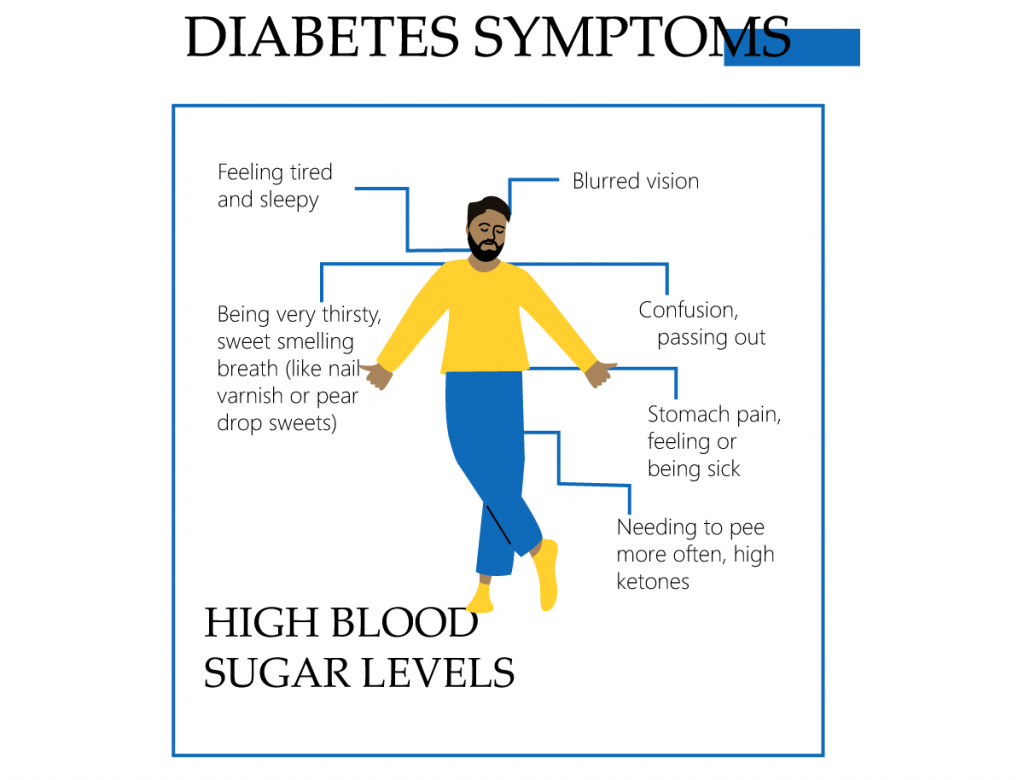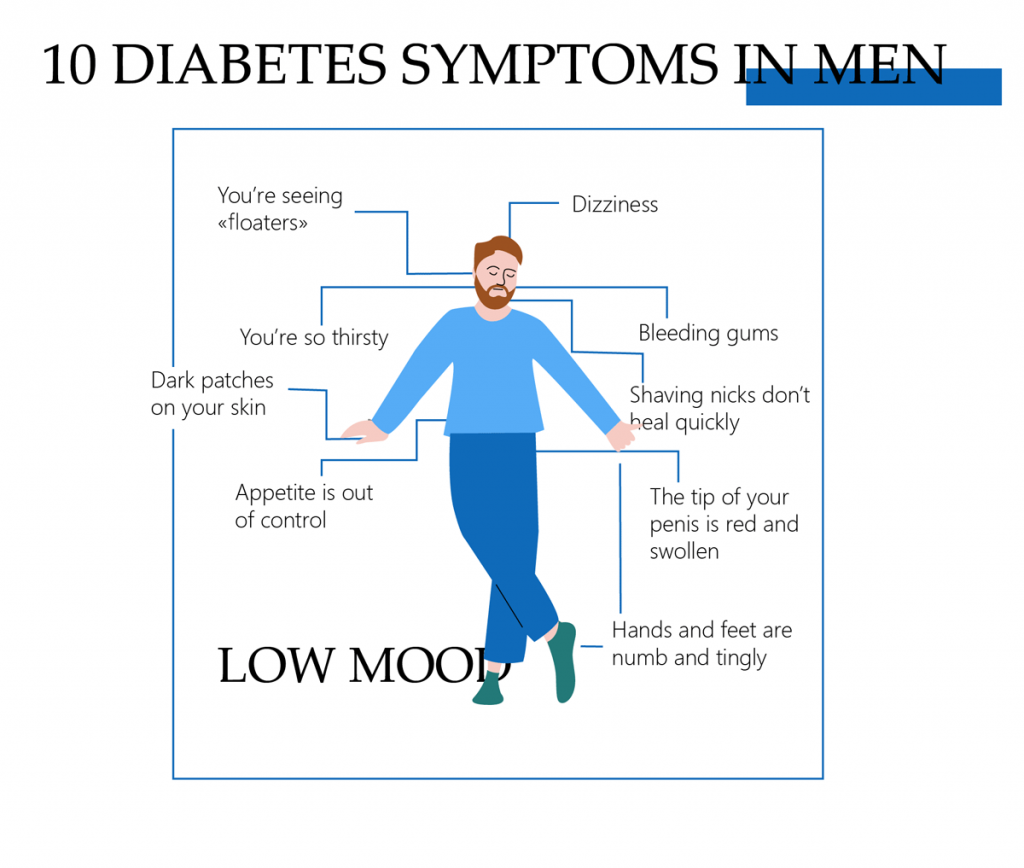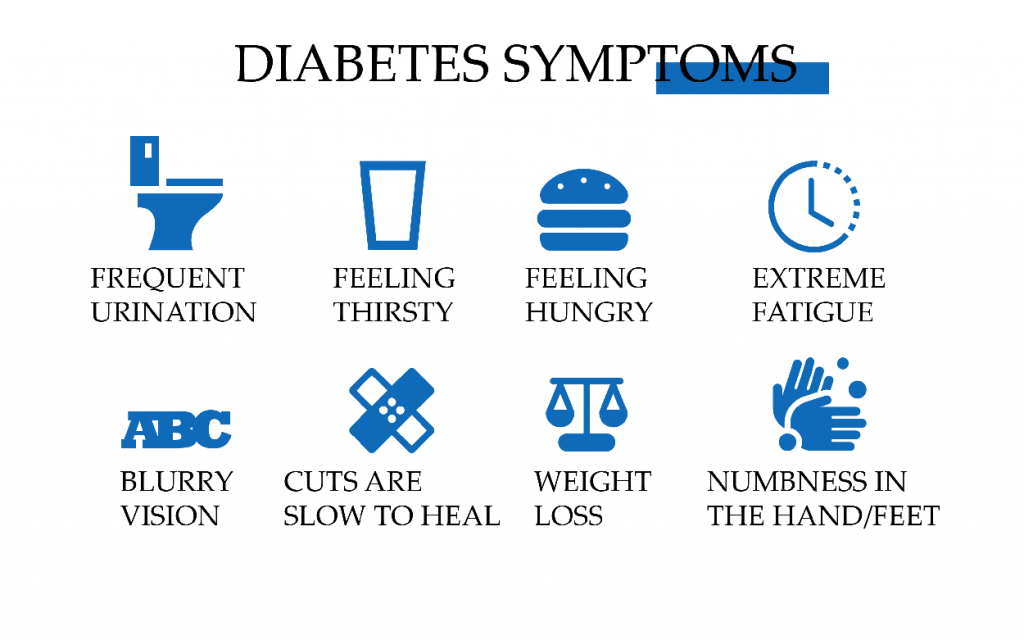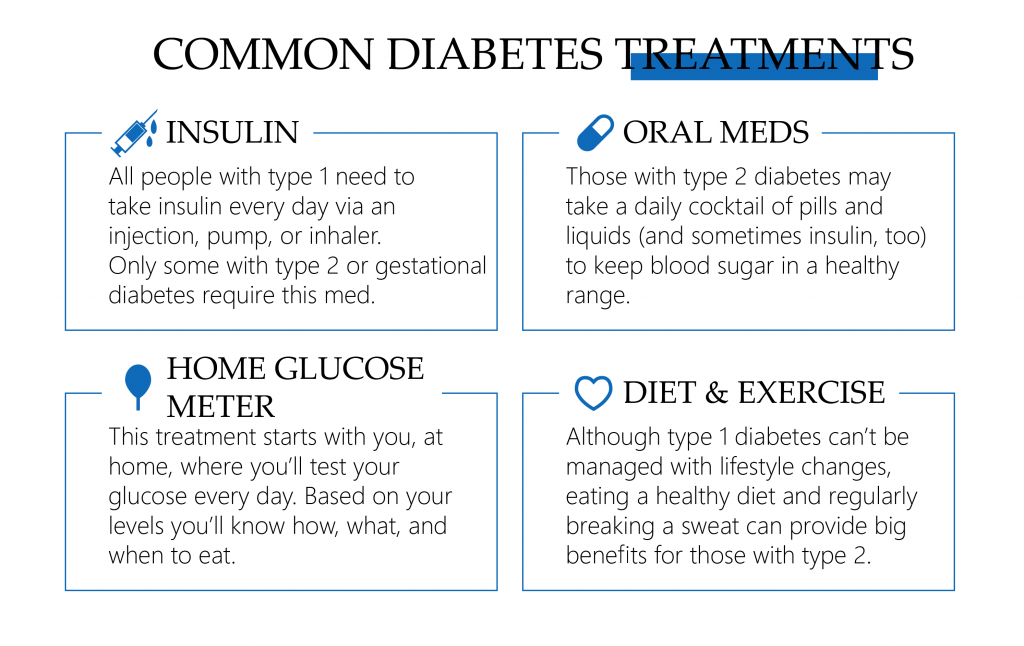Common Symptoms of Type 2 Diabetes in Men
In most cases, men face different symptoms that occur from time to time. It includes sudden hair loss, high blood pressure, nocturnal urge, increased daily water intake, thirst, and dry mouth. All of them are signs of severe disease that must be taken seriously.
Are Men or Women More Likely to Have Type 2 Diabetes?
There has been a lot of speculation on the issue, "Are men or women more likely to have symptoms of type 2 diabetes?" So, scientists have conducted research and found out that there are more chances to diagnose diabetes type 2 in men than in women because of different body weights.
Risk Factors for Diabetes
Resistance to insulin is the main cause that aggravates a person's well-being. During this process, the organism cannot fully correspond to this hormone. As the body can no longer perform in a normal way, glucose levels continue rising.
Weight
Compulsive overeating and obesity are the main causes of the disease. Adipose tissue receptors, unlike muscle, are less sensitive to insulin. So an excess of it affects the increased sugar levels in the organism.
Fat Distribution
The cause of the disease lies in excess sugar levels existing in the organism. It occurs when certain body parts fail and are no longer able to regulate these levels. This usually happens when there is excess fat in the liver or muscles.
As we know, fat accumulates in different parts. After all, men are mostly smooth in the abdomen, and this creates pressure on the liver. Whereas women's fat mainly accumulates on the buttocks and thighs.
Inactivity
Not enough level of physical activity can contribute to the development of a hazardous disease. Thus, overweight, obesity, and not active lifestyle results in having weak muscles. That is, your body starts gaining lots of fat.
Family History
If both of the parents have been suffering from the disease, the chances their children will have it are almost 60%. If only one parent has had diabetes, the probability is still relatively high - 30%.
Age
Age affects the development of diabetes. The older a person, the more worn out the body is. Thus, there are many chronic diseases, which increase the risk of developing diabetes. People are more likely to develop the disease after the age of 45 and even higher after the age of 65.
Prediabetes
Type 2 diabetes is one of the few diseases with well-known nature. So you can prevent it. The main thing is to start acting beforehand when metabolic disorders have just begun to develop. This is called prediabetes. It is a kind of gray zone, an intermediate state between normal and ailing.
After all, despite the fact that diabetes is hereditary, with an adequate approach to your lifestyle, these genes are unlikely to affect your health.
Race and Ethnicity
It has been proved that Hawaiians and Pacific Islanders with a normal body mass index more than three times are likely to have type 2 diabetes than white people of normal weight.
Scientists emphasize that they specially selected people with the same income level and living conditions for the research. Therefore, the predisposition to diabetes cannot be explained by anything other than the racial factor.
Common Type 2 Diabetes Symptoms in Men and Women
You can look through the list of type 2 diabetes symptoms in men and women. They include the following symptoms:
- Frequent urination.
- Increased thirst.
- Constant hunger.
- Fatigue.
- Blurry vision.
- Slow healing of cuts and wounds.
- Tingling, numbness, or pain in the hands or feet.
- Patches of dark skin.

These symptoms may be mild or even absent. So women and men with type 2 diabetes can live with them, not actually knowing it.
Unique Symptoms of Type 2 Diabetes in Men
Unlike women, men with a slight deterioration in well-being rarely turn to doctors. They associate their malaise with stress at work, unhealthy diet, and lack of adequate rest. So how to tell type 2 diabetes symptoms that men have?

Erectile Dysfunction
The main mechanism for evolving signs of existing type 2 diabetes symptoms in men are angiopathy. It damages the vessels that fill the penis with vigor. It complicates erection and leads to impotence.
Retrograde Ejaculation
This is one of the symptoms of type 2 diabetes you can notice in men. It is a process during intercourse when natural ejaculation does not occur. That is, the sperm does not enter the urethra but goes into the bladder. It is fraught with infertility.
After such a failure, a man may notice a cloudy light color of urine, which is explained by the content of sperm in it.
Low Testosterone
It is widely known that, along with a decrease in testosterone levels, the number of adipose tissue increases. With a deficiency of testosterone, under the influence of aromatase of excess adipose tissue, the conversion of androgens (testosterone and androstenedione) into estrogens increases. It suppresses the secretion of gonadotropin-releasing hormone and luteinizing hormone. This leads to an even greater decrease in testosterone levels.
Thus, the first sign of a decrease in testosterone levels may be an increased weight. Obesity, in turn, is the number one reason that gives the start to disease.
Decreased Libido and Sexual Dysfunction
How do type 2 diabetes symptoms and mood swings in men's behavior correlate? The most common problem men suffer from is erectile dysfunction. It occurs as a result of neuropathy, which is characterized by nerve damage as well as blood vessel damage. It disrupts the flow to the organ, which ultimately leads to problems with an erection. Abnormal protein buildup in organs affects the organs and the autonomic nervous system inauspiciously.
Urologic Issues
Because of the disease, a patient can come across neuropathy. It appears due to damages to the nerves that control the process of blood flow to the genitals. Besides, it decreases the production of the main male sex hormone, which is testosterone. The reason for this is a chronic sugar quantity increase.
Diabetes affects all areas of human life. The intimate sphere is no exception. But with qualified treatment and a healthy diet and lifestyle, diabetes and sex can be perfectly combined.
How to Prevent Diabetes Type 2 in Men
The trick of type 2 diabetes is that the disease at an early stage has no specific symptoms. Besides, prediabetes often does not manifest itself at all. So many patients are not even aware of their condition. However, looking through certain factors, you will do a test to define your sugar level.
Medications
Before taking any drugs, you need to consult your doctor. According to a new study, patients may be prescribed to take certain pills to prevent the disease. It is called pioglitazone, and it can reduce the risk of disease development in patients diagnosed at an early stage.
Lifestyle Changes
First things first, you need to change your approach to your lifestyle. Metabolic disorders sooner or later lead to diabetes. So it is high time to put yourself together and start living a healthy life.
In addition, healthy diets for men with signs of type 2 diabetes can help a lot to maintain balanced nutrition. You must control your calorie consumption if you are overweight. You must reduce saturated fats like sweets, butter, bread with opposite products like avocados, nuts, olive, and vegetable oils. Also, you need to eat a decent amount of fiber.
Besides, bad habits and the environment also affect your well-being. If you smoke, you should give it up to prevent developing disease.
When It's Time to See a Doctor
The first symptoms a man can trace is problems in his sexual life. The reason for this is a tremendous decrease in sex performance. It appears out of the development of angiopathy. Thus, you do not receive an appropriate quantity of flow to the genitals.
The high content of ketone bodies in the patient's blood contributes to suppressing testosterone production. This leads to the fact that the potency decreases and other signs of this disease begin to appear more prominent.
Diabetics are more prone to have challenges in sex more than others. Your libido can be negatively affected by a lot of factors. It could be stress, depression as the side effect of drugs, and, eventually, lack of enthusiasm.
If you notice any symptoms concerning libido issues, consult your doctor to determine what measures you can take to improve the situation. Do not be nervous and ashamed. You are far from the first one who faces this problem.
Though you may think that this is something weird to you, be sure that a medical specialist is glad to help you.
You should beware of the following behavior and signs of progressing diabetes in men:
- weak erection or complete impotence;
- decreased libido;
- ejaculation struggles;
- lack of orgasm;
- quality and quantity of sperm;
- development of infertility.
As type 2 diabetes progresses, the symptoms become more prominent, and manifestations of malfunction of various organs are added to the above signs. Brain cells and the heart need simple sugar and oxygen for their normal functioning. Therefore, they become ruined. This process can be characterized by oxygen starvation and simple sugar deficiency.
Besides, an excess of sugar leads to the obliteration of arterial vessels. They lose their form, the lumen of the arteries narrows, and cholesterol plaques appear on the walls. In the aftermath, patients additionally suffer from:
- elevated blood pressure;
- disturbed heart rhythm;
- heart attack and stroke occurrences.
If the disease is not detected in time, it continues affecting other tissues and organs. A patient's kidneys and liver suffer, resistance to infections decreases, and osteoporosis develops. Besides, trophic ulcers appear on the feet and legs.
Any cold is fraught with serious complications, and pneumonia is extremely difficult to treat. This is why Covid-19 is usually hazardous to people with type 2 diabetes.

Treatment for Type 2 Diabetes in Men
Treatment for progressing type 2 diabetes symptoms in men is picked and carried out, taking into account the stage of the disease. Moreover, the doctor minds your previous medical history, general health condition, lifestyle, and many other aspects. This disease must be approached wholly.
With an HbA1C level of 5.7% to 6%, only diet and lifestyle adjustments can be made. Normalizing glucose metabolism and avoiding the onset of the disease in the vast majority of cases allows:
- Reducing sugar and fast carbohydrates intake.
- Improving the quality of night sleep.
- Weight correction.
- Long walks, swimming pool, gym.
- Elimination of the source of constant stressful situations. If necessary, it can lead to a change of job, place of living, and so on.
If you have one of the above indications, consult an endocrinologist. The doctor will conduct the necessary studies, diagnose you, and prescribe treatment.
Recently, leading western diabetologists have been persistently advising such patients to combine the above measures with taking medications that work in two directions:
- Recovering muscle cells in order to respond to hormone and use simple sugar for maintaining the functioning of organs.
- Slowing down and blocking the absorption of easily digestible carbohydrates in the intestine.

Possible Complications
Over time, any severe disease results in certain health aggravations and intensification of organism exhaustion. And diabetes, unfortunately, is not an exception. Issues with other organs occur out of a prolonged rise of sugar (hyperglycemia). Thus, if the concentration of sugar levels rises gradually, it will persist longer. What is more, it will no longer be cured by medicine. Therefore, such complications become more severe.
It is said that diabetes comes all of a sudden. Often, the patient is unaware of it. But over time, the disease causes serious disorders of almost all organs and systems of our body. Usually, blind spots are blood vessels, nerves, kidneys, and heart.

















